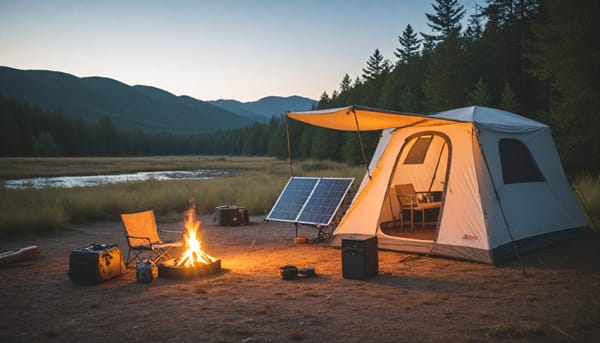You've Decided Solar Technology is Right for You. Now What?

Understand Your Needs

First, we need to Calculate Your Energy Consumption. Go around your home, RV, or off-grid cabin and list all the appliances and devices you plan to use. Make sure you note their wattage and the number of hours you plan to use them daily. Multiply the wattage by the hours to get the daily watt-hours for each appliance.
Solar Panels

Next, we Estimate the Solar Panel Output. Solar panels are rated by the wattage they can produce in ideal sunlight conditions. To find the total wattage needed, divide your total daily energy consumption by the average number of sunlight hours.
Battery

Now let's work on your Battery Storage Capacity. Calculate the total amp-hours you need to store by considering days without sunlight. Ensure your battery bank can store enough energy for your usage, especially if you plan to be off-grid. A general rule is that a 100-watt solar panel produces about 30 amp-hours per day. The formula to calculate the battery bank's energy capacity rating in amp-hours (considering days without sunlight and system efficiency) is:
For example, if your daily consumption is 80 Ah and you want to go 5 days self-sustained, your batteries have a depth of discharge of 50% and system efficiency is 85% then the calculation would be:
This means you need a battery bank that can store about 941Ah to ensure your system operates for the full 5 days without sunlight.
Inverter

Let's move on to Inverter Sizing. If you need AC power, choose an inverter that can handle the total wattage of all appliances running simultaneously. The inverter should always have a higher wattage rating than your total appliance load. Use the following formula to determine the inverter size you need:
The multiplication by 1.4 accounts for the extra power needed for inductive loads and provides a safety margin. Now it's time to select the inverter. Choose an inverter with a wattage rating that meets or exceeds the result from the formula. For example, if you want to run a laptop (150W), LED lights (7W), a small fridge (75W), a TV (150W), and charge a phone/tablet/handheld game system (50W), you need to calculate the total wattage like this:
Then apply the formula:
You can conclude that you would need an inverter that can handle at least 600 watts to power all your appliances simultaneously.
Controllers

Lastly, let's take a look at Solar Charge Controllers. Some systems may have this controller integrated within the inverter or battery. The charge controller is the heart of solar kits, ensuring that batteries are charged in the most efficient manner while also safeguarding the entire system against potential issues. When it comes to off-grid solar systems, the presence of a charge controller is non-negotiable. It's the anchor that keeps the system running smoothly by managing the power flow. That being said, the scenario changes for grid-tied systems. Here the inverter plays a dual role by not only converting DC to AC, but also feeds surplus energy back into the grid, eliminating the need for a charge controller. Additionally, for those smaller setups where a solar panel delivers approximately 2 watts or less per 50 battery amp-hours, a charge controller might not be necessary.
We're Here to Help

At GetReadyCo, we understand that embarking on your solar journey is just the beginning. Remember, the steps we've outlined are your starting point. Solar power is a personalized experience, and it's crucial to have a system that's tailored to your unique needs. That's why we encourage you to reach out to our team of solar power experts. They're equipped to provide you with detailed advice, ensuring that your setup is not only safe and efficient, but also aligns perfectly with your energy aspirations. Don't hesitate—visit us at GetReadyCo.com. We're here to help you harness the power of the sun, every step of the way.




